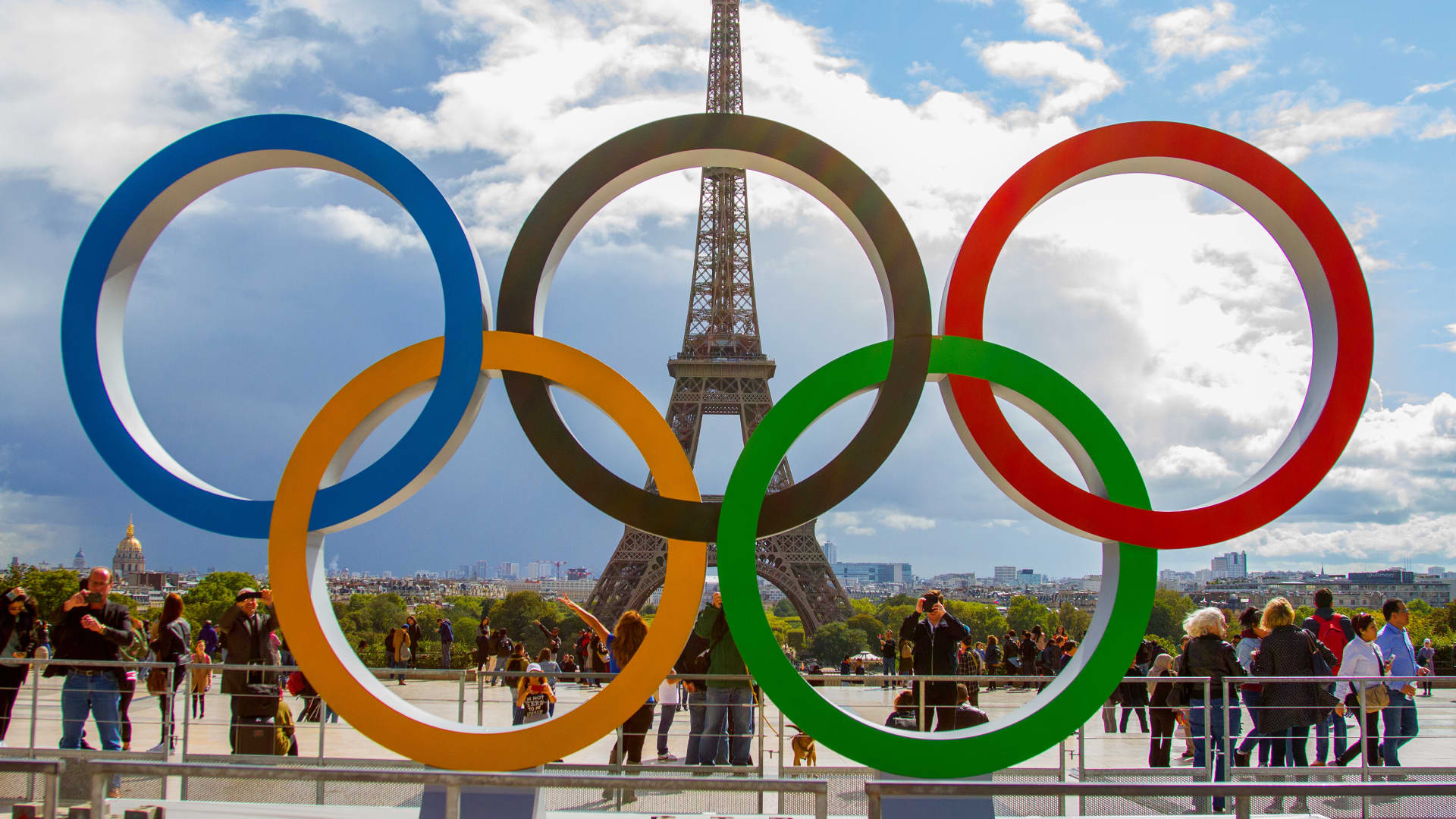PARIS, ILE DE FRANCE, FRANCE – 2017/09/14: The Olympic Rings being placed in front of the Eiffel Tower in celebration of the French capital won the hosting right for the 2024 summer Olympic Games. (Photo by Nicolas Briquet/SOPA Images/LightRocket via Getty Images)
Sopa Images | Lightrocket | Getty Images
Training of elite athletes dates as far back as the Ancient Olympic Games, when so-called gymnastes advised runners, chariot racers, wrestlers and boxers on technique, nutrition and strength conditioning.
Fast forward to today’s Olympians prepping for next summer’s Paris Games. Their trainers and coaches adhere to the same Olympic motto — faster, higher, stronger — yet have the added benefit of millennia of ever-advancing technology, which now has been super-charged with artificial intelligence.
Trainers and coaches at U.S. Soccer, one of the 47 National Governing Bodies overseen by the United States Olympic and Paralympic Committee, are using AI technology to instantaneously identify and track player movements and ball positions. A suite of software tools allows them to study a variety of human performance metrics, such as body position, velocity, speed and timing in real time on the field of play.
“Utilizing advances in AI and computer vision, we’ve been able to track and study personalized analytics from a variety of sports to determine the strengths and deficiencies in an athlete’s movement and help them make data-informed training and competition plans that can help them improve their performance, as well as their own health,” said Mike Levine, director of performance innovation business operations at the USOPC, based in Colorado Springs, also the home of a high-tech Olympic training center.
While the USOPC and NGBs employ in-house experts in bleeding-edge technology development, data analytics and sports sciences and medicine, big tech companies lend their AI know-how as well. USA Surfing staff, for instance, has teamed up with Microsoft engineers to figure out how best to ride waves. They take digital videos of surfers in action and use AI to analyze data on body movement, surfboards and waves to determine what they did well and what could be improved.
“This work saves coaches and staff hundreds of hours of video tagging, facilitates the accumulation of more and higher-quality data and affords analysts and coaches significantly more time to analyze the data and implement learnings into real-life training and performance,” Levine said.
Creating 3-D…
Click Here to Read the Full Original Article at Top News and Analysis (pro)…


